Test: Mit einem sehr günstigen Carbon-Radsatz macht Newcomer Haero Carbon auf sich aufmerksam. Doch der Preis ist nicht das einzige Interessante am Haero Carbon Road-Aero 50.
Ein Spezialist für Formenbau mit fast 50-jähriger Erfahrung als Zulieferer der Automobil- und Maschinenbauindustrie, dazu ein Faible für den Radsport – das ist in Kurzfassung die Geschichte der Marke Haero, ein Tochterunternehmen der A. Härer Werkzeugbau GmbH. Lenker für Triathlon-Räder und Rennmaschinen (etwa der Carbon-Rennlenker H.145 RR SL mit 159 Gramm Gewicht) fertigt Haero selbst, andere Komponenten bezieht die Firma von Kooperationspartnern – auch den hier vorgestellten Laufradsatz namens Road-Aero 50. Und der ist in mancherlei Hinsicht etwas Besonderes.
Los geht’s beim Preis: 999 Euro für einen Carbon-Radsatz ist rekordverdächtig günstig, zumal ein zweites wichtiges Kriterium stimmt, nämlich das Gewicht. 1.620 Gramm (VR 710/HR 910 g) mit Felgenband und ohne Spanner (Satz: 100 g) gehen voll in Ordnung, auch wenn der Anbieter ein etwas geringeres Gewicht für die Haero Carbon Road-Aero 50 angibt. Angesichts der zierlichen Novatec-Naben dürften die 50 mm tiefen Felgen nicht allzu leicht sein, was sich jedoch in keiner Weise aufs Fahrverhalten auswirkt: Die Laufräder lassen sich leicht beschleunigen und sind bei abrupten Lenkmanövern und im Wiegetritt angenehm neutral. Auch bei hohem Tempo kann man das Rad ohne zusätzlichen Krafteinsatz einlenken oder in die Kurve legen. Und selbst bei eng stehender Bremse schleift das Hinterrad im kräftigen Wiegetritt nicht am Belag – ein Zeichen für anständige Seitensteifigkeit.
All das ist jedoch kein Grund, sich einen Hochprofil-Radsatz zu kaufen – was zählt, ist die bessere Aerodynamik tiefer Felgen, die jedoch stark von der jeweiligen Form abhängt. Als besonders geeignet hat sich das sogenannte U-Profil mit abgerundeter Felgeninnenseite erwiesen, denn bei ihm fällt der aerodynamische „Nachlauf“, also die bremsende Verwirbelungszone hinter der Felge, besonders klein aus. Dazu kommt noch der sogenannte „Segeleffekt“, der jedenfalls im Windkanal zu beobachten ist: Wie die Tragflächenform eines Flugzeugs Auftrieb erzeugt, sollen bestimmte Felgenformen für Vortrieb sorgen – bei Seitenwind sinkt dann der Leistungsbedarf im Kampf gegen den Wind, die Laufräder werden quasi angeschoben.
Die von Haero zur Verfügung gestellten Windkanal-Ergebnisse stimmen zuversichtlich – gegen einen gemeinhin als Benchmark geltenden US-Mitbewerber sollen die Laufräder sogar einen kleinen Vorsprung erzielen. Was man im Labor messen und beschreiben kann, ist jedoch das Eine; wichtiger sind die Erfahrungen in der Praxis. Daher wagten wir uns mit den Haero Carbon Road-Aero 50 auch an Tagen mit starken, wechselnden Winden auf die Straße. Diese müssten ordentlich an den tiefen Felgen zerren und seitlichen Druck ausüben, so die landläufige Meinung – Bedingungen also, bei denen Aero-Laufräder weniger optimal sind. Auf ausgesetzten Straßen, die mal mehr nach rechts, mal mehr nach links in den Wind hinein führten, erlaubten die 50-mm-Laufräder ein merklich höheres Tempo als solche mit konventionellen, flache Felgen; die Einflüsse auf die Lenkung hielten sich dabei in Grenzen. Klar, es gibt Tage, da zieht man sich nicht freihändig fahrend die Jacke aus. Doch das bekannte Phänomen, dass einen eine von rechts kommende Windböe zur Straßenmitte drückt, blieb aus. Als wir später die gleich Strecke zurück fuhren, schob der Wind dann extrem an – ebenfalls ein Vorteil gut konstruierter Aero-Felgen.
Wobei die Haero-Laufräder nicht sonderlich auffällig geformt sind. Von der 24 mm breiten Bremsfläche an verjüngen sich die Felgen gleichmäßig, anstatt sich wie viele aktuelle Modelle noch einmal aufzuweiten; im Bereich der Speichennippel sind sie abgerundet. Die 20/24 Speichen sind hinten rechts zweifach gekreuzt, ansonsten radial montiert. Die Maulweite der Felgen liegt bei 16,5 mm, was dazu führt, dass ein 23er Reifen auf 25 mm Breite auseinandergezogen wird, ein 25er auf 27 mm. Das sorgt für eine minimale Verbesserung des Rollwiderstandes, zur dessen Optimierung es aber noch eine weitere Methode gibt: die Umrüstung auf Tubelessreifen. Schlauchlos zu fahren, kann bereits bei 30 km/h im Vergleich zu identisch aufgebauten Faltreifen an die 3 Watt pro Laufrad sparen. Da der „RoWi“ proportional zur Geschwindigkeit wächst, ergeben sich bei höherem Tempo Einsparungen, die durchaus dem gleichkommen, was Aero-Felgen bringen. Einen schlecht rollenden Reifen auf eine aerodynamisch optimierte Felge zu montieren, ist also ziemlich unklug.
Bei Felgen, die nicht explizit auf Tubeless ausgerichtet sind, sind Montage und Abdichtung etwas aufwendiger, aber durchaus machbar. Die Haero Carbon Road-Aero 50 von Conti Grad Prix 4000 auf Schwalbe Pro One umzurüsten, gelang uns mit einer Mischung verschiedener Tubeless-Felgenbänder – und zwar so gut, dass mehrere Tage im Fahrradkeller nur zu minimalem Luftverlust führten. Ohne Dichtmilch ging das natürlich nicht ab, was aber einen weiteren Vorteil hat: Die Reifen werden damit so pannenresistent, dass man bei wichtigen Einsätzen auch mal Pumpe und Schlauch zuhause lassen kann.
Wer schnell rollt, muss stark verzögern können, und in dieser Disziplin gaben sich die Carbonfelgen im Zusammenspiel mit den mitgelieferten grauen Belägen keinerlei Blöße – jedenfalls bei Trockenheit. Starke Bremsleistung ohne merklichen Abrieb an Felge oder Belag, dazu eine nur geringe Geräuschentwicklung – mehr kann man nicht verlangen.
Und so hinterlassen die Haero Road-Aero 50 in allen Teildisziplinen einen ausgesprochen guten Eindruck – oder anders gesagt: In Sachen Preis-Gewichts-Steifigkeits-Aerodynamik-Rollwiderstands-Bremsverhaltens-Verhältnis sind sie nur schwer zu schlagen. Wie heißt es in Baden-Württemberg so schön: „Wir können alles. Außer Hochdeutsch“. Umformuliert auf diesen Laufradsatz müsste es heißen: außer teuer.

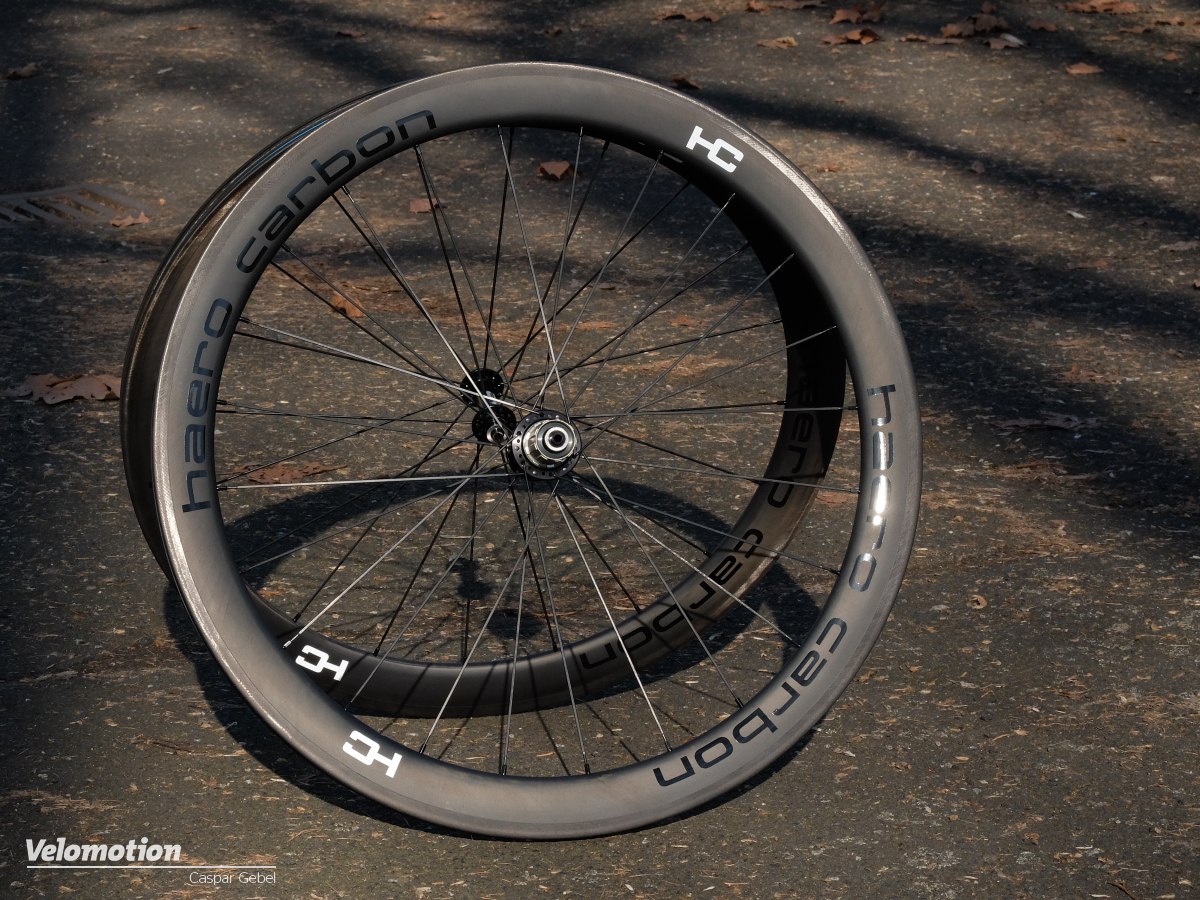
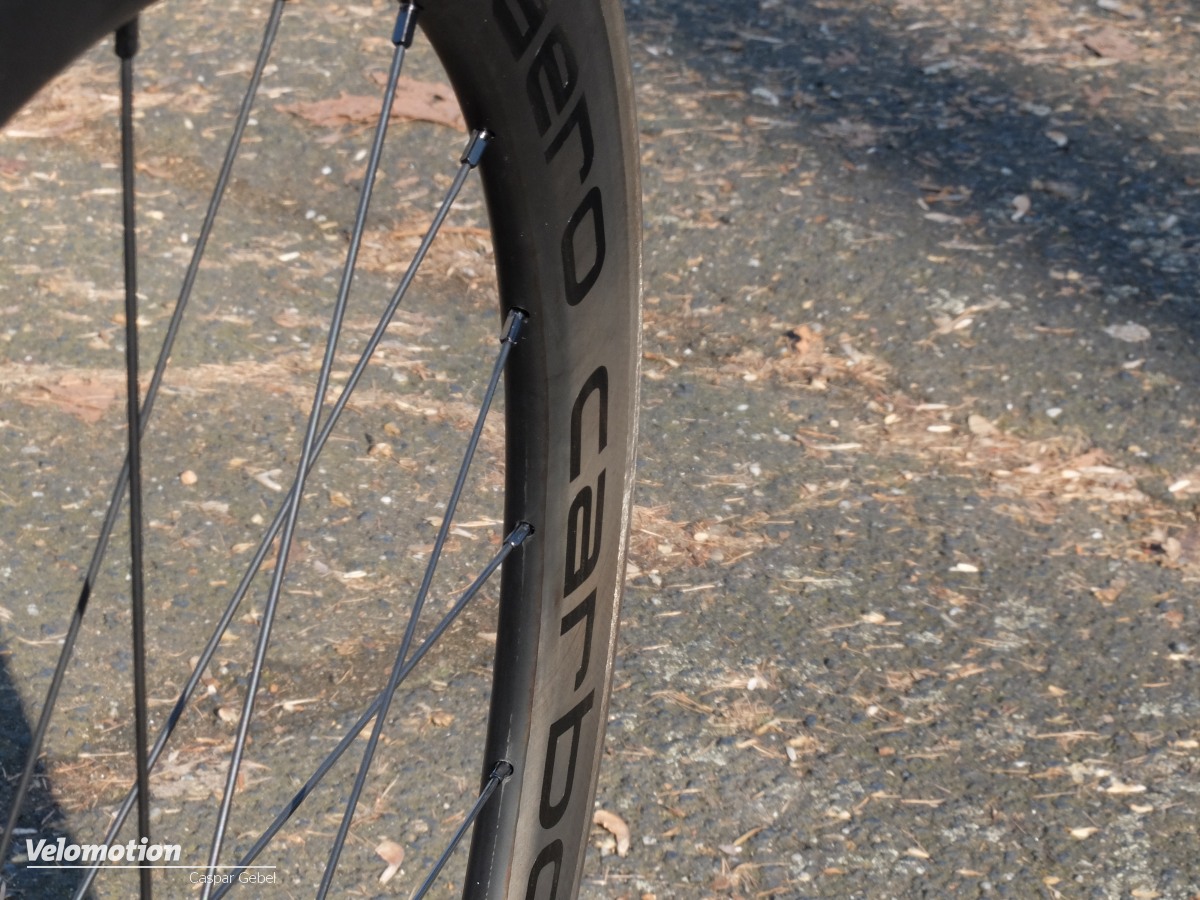
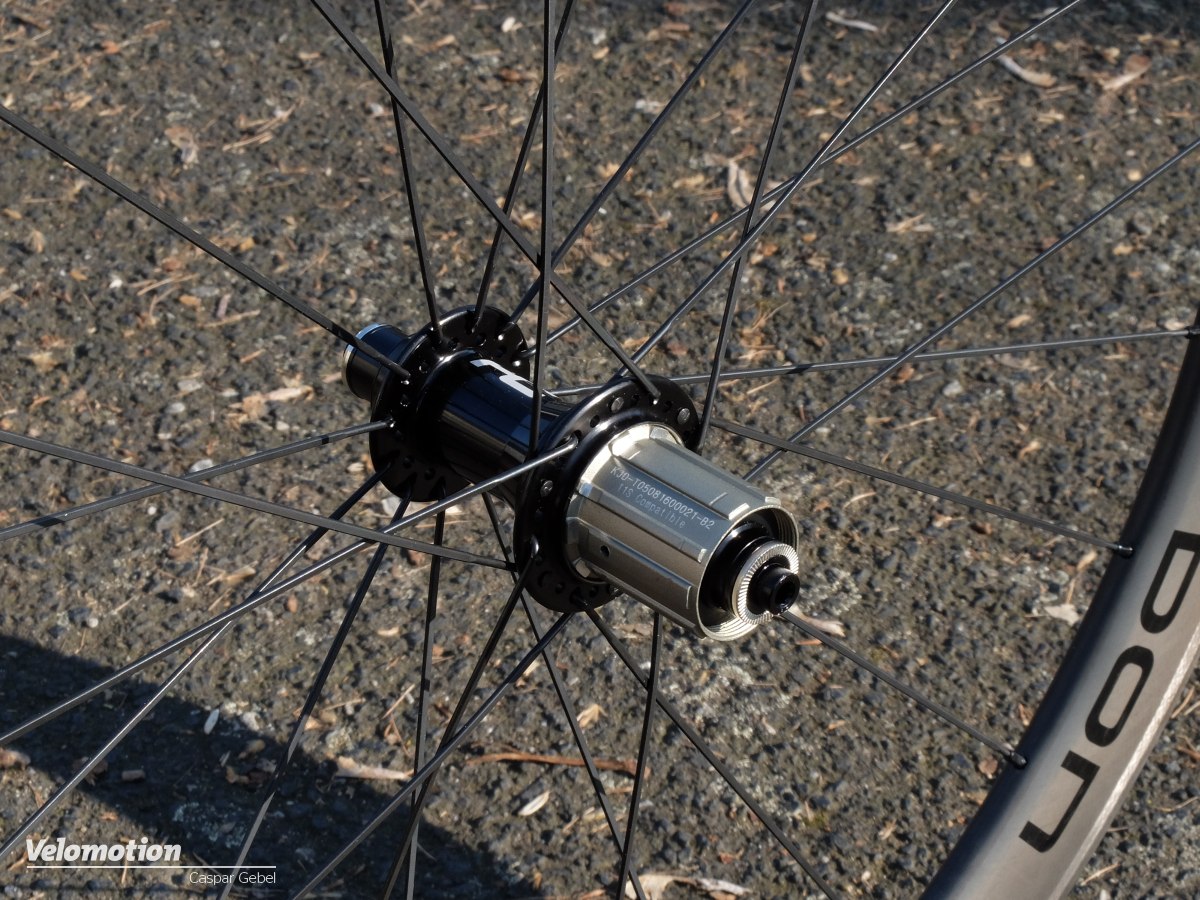
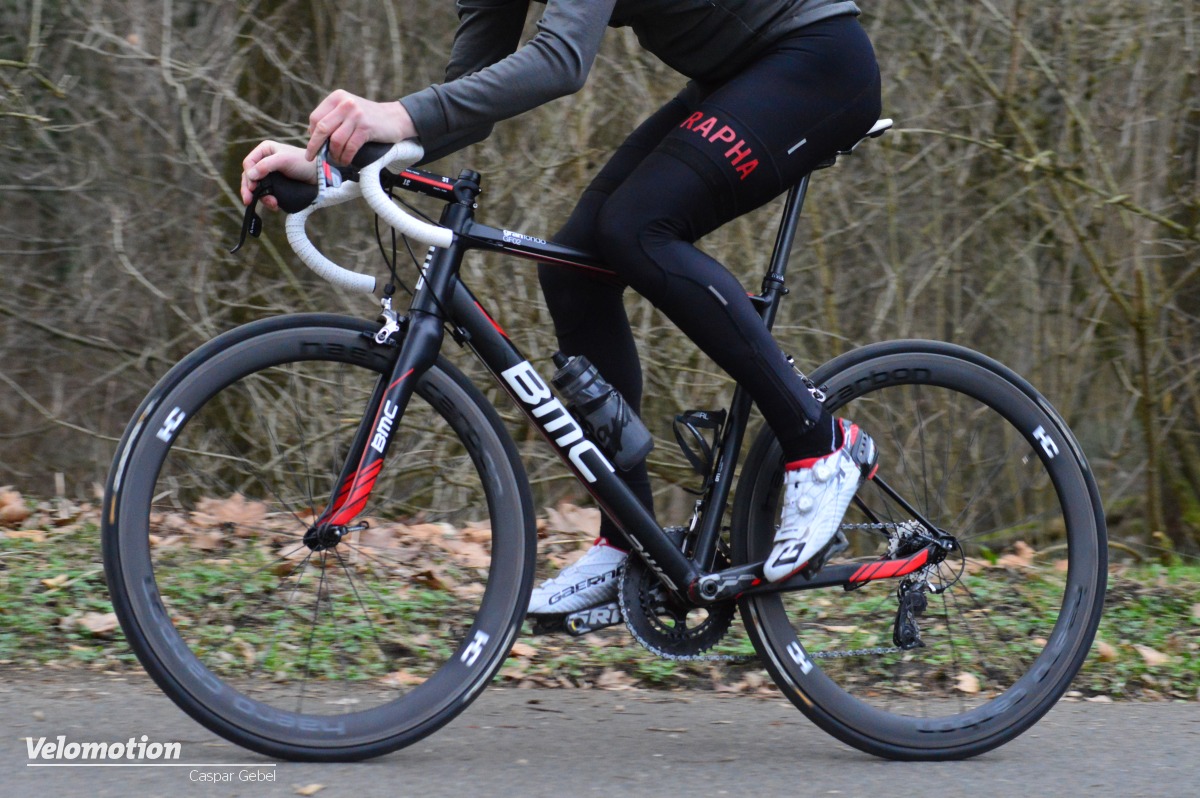
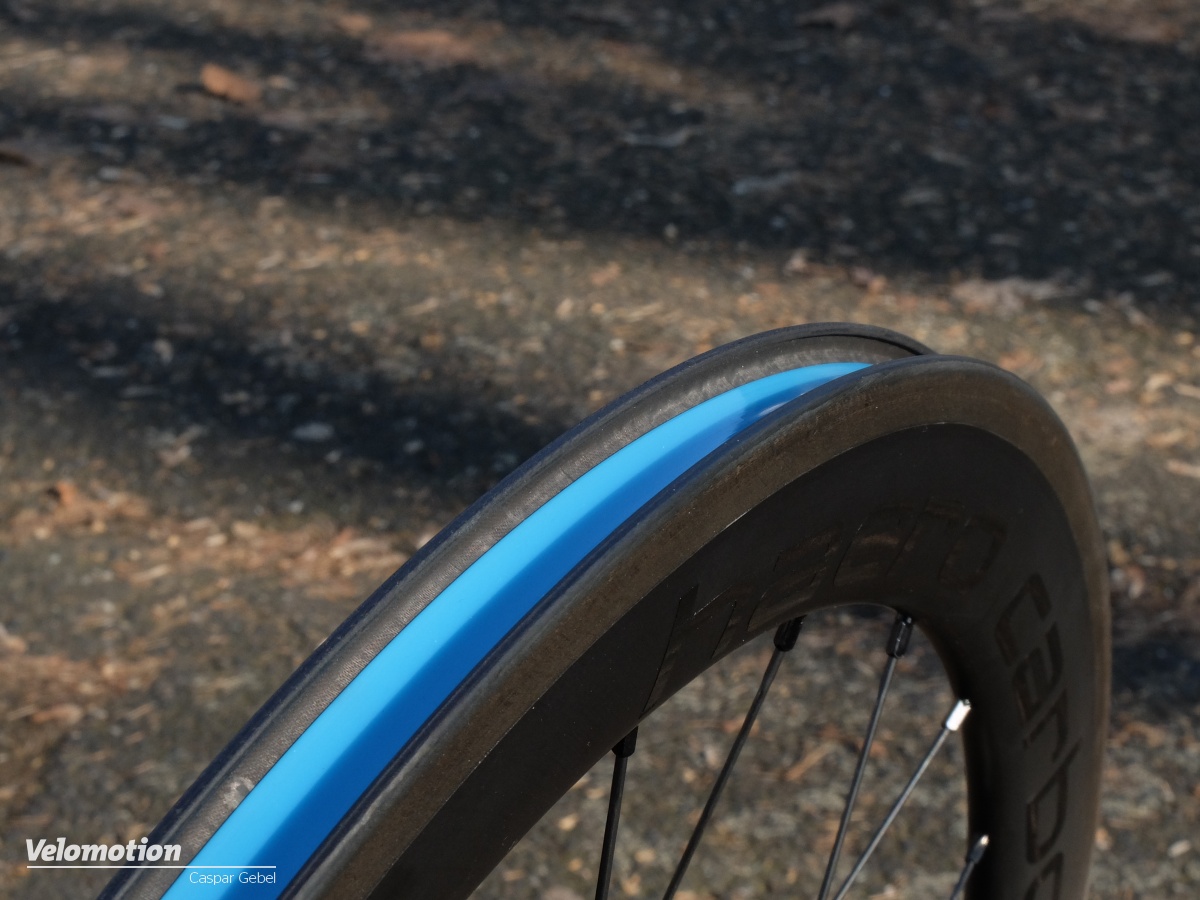
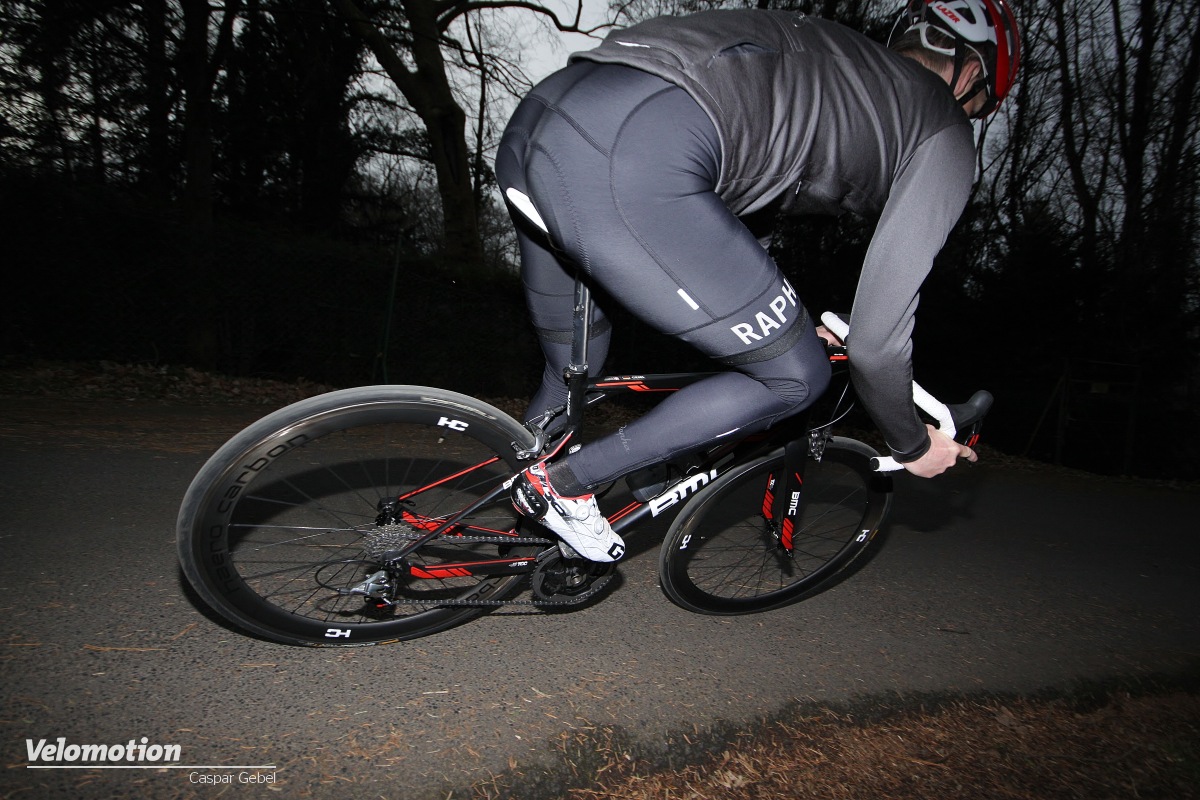
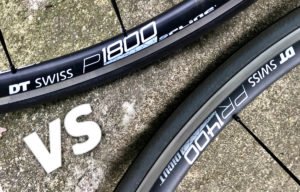


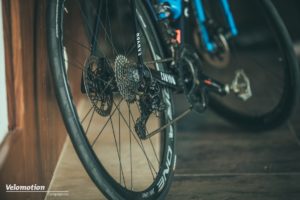
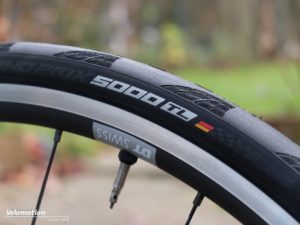
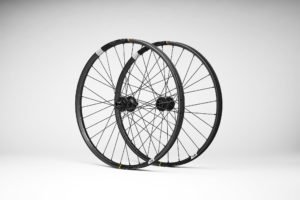
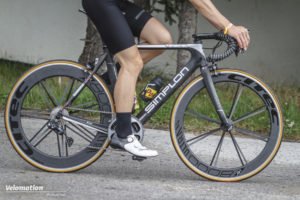
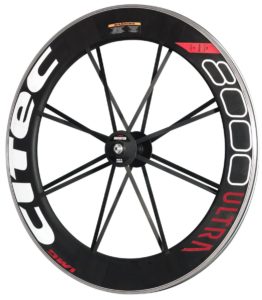
Schreibe einen Kommentar